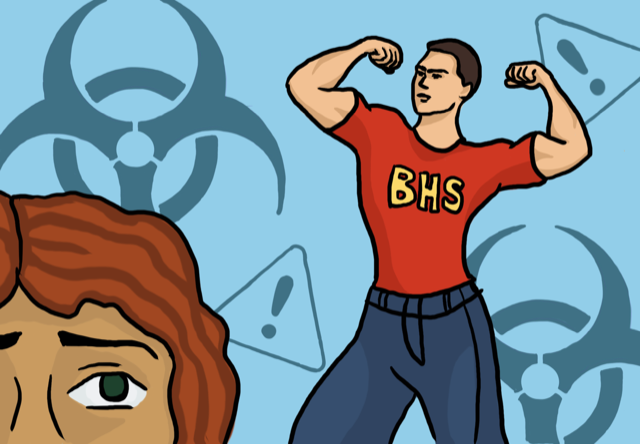A diverse and random sample of 100 Berkeley High School students from all grades and Small Learning Communities were asked to answer “Yes” or “No” to “Does BHS have a toxic masculinity issue?” Of the people surveyed, 69 percent responded with “Yes,” asserting that it is an issue at BHS, while the other 31 percent responded with “No,” remarking that it is not.
Toxic masculinity is a set of attitudes and ways of behaving stereotypically associated with or expected of men, regarded as having a negative impact on women and society as a whole. With a student body of over 3500 students, a large fraction being male-identifying, this negative culture is rampant throughout the school.
According to the survey, BHS students claim that toxic masculinity is not only apparent, but it is also an “issue.” A factor playing into this is the gender imbalance on who is aware of this issue and speaking up about it. Of the people who chose “Yes” on the poll, 70 percent identify as female. Furthermore, only 10 percent of people who chose “No” are female-identifying. This speaks to a huge gender imbalance and consequently, to the issue itself.
It’s not difficult to relate the fact that half of the males experiencing issues in their mental health never outwardly express their difficulties, or that men make up nearly 80 percent of people who die by suicide, according to the Center for Disease Control and Prevention’s website. The fact that the group in which this culture is both cultivated and implemented is mostly oblivious to it shows how much of a problem it truly is.
Young people constantly hear phrases that include, “boys will be boys,” “man up,” “grow a pair,” and “don’t be a p*ssy.” These sayings reinforce the idea that masculinity is superior and provides an excuse for misbehavior. They vocalize the idea that male nature is confining and dominant. This, however, is not true nor is it alright. It leads to belittling other forms of gender expression and setting unrealistic and negative intentions; toxic masculinity. This is not the attitude that should be represented in a learning environment; it only creates the foundation for more toxicity, inhibiting crucial relationships and educational practices.
According to NextGenMen, “70 percent of youth hear ‘that’s so gay’ at school every day. The boys who use homophobic language in middle school are more likely to sexually harass girls when they’re older, and boys who are targeted for ‘inadequate’ gender performance are more likely to become the perpetrators of school shootings.” Toxic masculinity in schools is observable and directly affects adolescent development. Though work has been done at BHS through things like the facilitation of conversations and walkouts, there is still much more progress to be had. It is crucial that we cultivate the attention which it deserves.
There are ways in which anyone can make an effort towards decreasing toxic masculinity in our society today, such as speaking out about it amongst friends, peers, and adults. Any conversation is better than no conversation. Toxic masculinity affects us as students at BHS and as the future generation. It is our responsibility to call it out and model positive gender expression as best we can.


